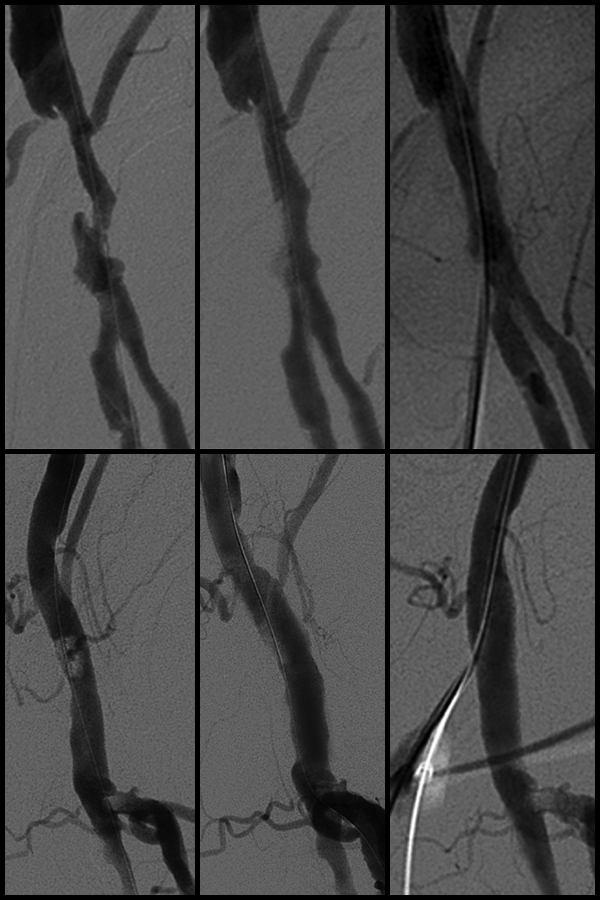|
Back to Annual Meeting Posters
Positive Remodeling of the Common Femoral Artery Associated with Directional Atherectomy
Sung Yup Kim, MD, Ageliki Vouyouka, MD, Rajesh Malik, MD, Rami O. Tadros, MD, Michael L. Marin, MD, Peter L. Faries, MD.
Mount Sinai School of Medicine, New York, NY, USA.
Introduction: Open vascular surgery has been the preferred modality for the treatment of common femoral artery disease. Atherectomy has been increasingly applied as an alternative method. This endovascular technology is believed to work by means of debulking atherosclerotic plaques and creating an adequate lumen. In this study, we present two cases of severe common femoral artery lesions that were successfully treated with Silverhawk atherectomy and found to have an increased luminal diameter on an angiogram one month after the procedure. We propose that the mechanism of atherectomy is based on not only removing plaques but also inducing changes in the treated vessel leading to positive remodeling and increased overall luminal diameter.
Methods: A retrospective chart review was performed on two cases of common femoral artery lesions treated with Silverhawk atherectomy, and their radiographic images were analyzed and compared.
Results: Both patients had a history of abdominal aortic aneurysm, coronary artery disease, hypertension, dyslipidemia, diabetes mellitus and smoking. They were treated with maximal medical therapy and had severe lifestyle limiting claudication. Their resting ankle-brachial indexes ranged between 0.4 and 0.5 bilaterally. MR angiography of the abdomen and pelvis with runoff demonstrated severe common femoral artery lesions. These lesions were treated with several passes of SilverHawk atherectomy catheter. Post-atherectomy angiograms demonstrated less than 50% residual stenosis of the common femoral arteries and no dissection or evidence of distal embolization. During follow up, the patients had improvements in their claudication symptoms, and the ankle brachial indexes increased (range 0.8 to 0.85). Both patients underwent endovascular treatment of the contralateral superficial femoral lesions one month later. During these procedures, angiograms of the previously treated common femoral arteries were performed and demonstrated widely patent arteries with significant luminal diameter increases compared to the prior month angiograms (figure1 and 2).
Conclusion: This study represents the first report of positive remodeling in femoral lesions treated with Silverhawk atherectomy. Debulking of the atherosclerotic plaques appears not to be the sole mechanism of atherectomy. We believe that adjunctive angioplasty and stenting to improve angiographic appearance is not necessary as arteries may continue to remodel after undergoing atherectomy.

Back to Annual Meeting Posters

|


